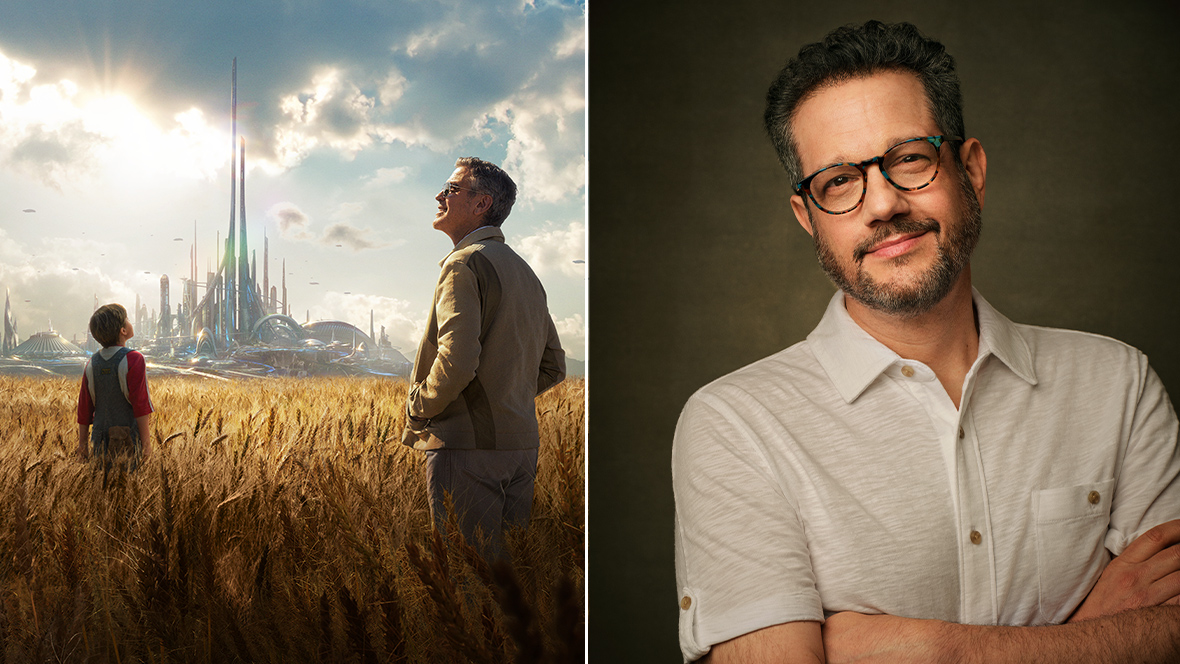The creator of many celebrated film scores reunited with longtime collaborators Brad Bird and Damon Lindelof for the Disney Parks-inspired movie that’s fast becoming a beloved classic.
By Lucas O. Seastrom, Lucasfilm
It’s only fitting that the composer for Tomorrowland “the film” had already composed music for Tomorrowland “the place.” Not long after he’d finished work on the score for director Brad Bird’s The Incredibles in 2004, Michael Giacchino got a call from Walt Disney Imagineering, asking if he’d be interested in composing new music for the iconic Space Mountain at Disneyland.
“Wait, what? I get to do that?” Giacchino remembers thinking. “That’s better than almost anything else you could ask me to do – to work with the Imagineers on something that’s going to be there at Disneyland for years to come.” Growing up in New Jersey, Giacchino and his family made a trip to Walt Disney World when it first opened, where the Magic Kingdom made a strong impression. “I thought, what is this magical place? How do I live here?” he recalls. “I feel like, as an adult, I was able to answer some of those questions and become a part of this thing that I loved so much.”
The Incredibles was Giacchino’s first feature-length movie score, one that “broadened my horizons,” as he puts it, opening up many new career opportunities. “I love this idea that the things you’re passionate about, the things you put your time into, they become a part of you and inform what your world is,” he explains. “It all comes from the love of it. When you put your positive energies into the things that you are passionate about it will reshape your world in ways you can’t know.”
That would come full circle a decade after Giacchino’s work on Space Mountain when Brad Bird recruited him for another film project, 2015’s Tomorrowland, now celebrating its 10th anniversary. It was a story after his own heart. “Ultimately, Tomorrowland is about getting you to that place where you feel like those things, those loves and passions, if you put them out in the world, they won’t just make the world better, but they’ll make you better, too.”
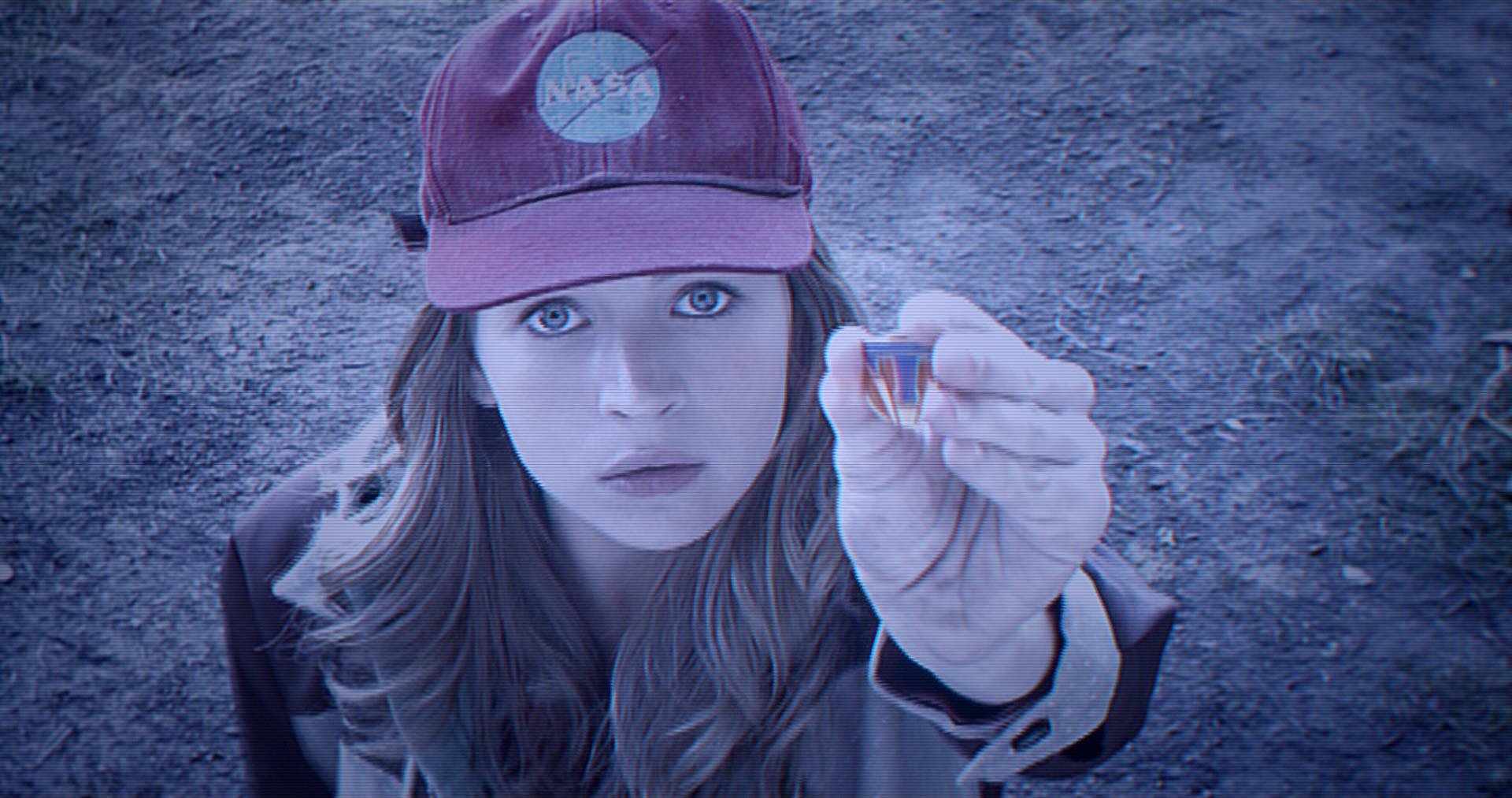
A Top-Secret Project
Giacchino first learned of the budding Tomorrowland project from writer and producer Damon Lindelof, with whom the composer had worked on the ABC television series Lost (2004-2010). Lindelof had originated the concept with fellow writer Jeff Jensen as an aspirational story about the quest to build a better future. Soon director and writer Brad Bird signed on as well. “It was this top-secret thing,” Giacchino recalls, “and it didn’t take long for me to call Brad and say, ‘Hey what is going on? What is this?’ It was both of my worlds coming together.”
Tomorrowland takes dreamers Frank Walker (George Clooney) and Casey Newton (Britt Robertson) on a journey to rediscover Tomorrowland, a cross-dimensional realm established by the world’s great minds to innovate solutions to society’s challenges. Helping them along the way is an ageless young girl, Athena (Rafey Cassidy), who is in fact an Audio-Animatronic. Opposing them is David Nix (Hugh Laurie), the cynical, authoritarian ruler of Tomorrowland who has accepted humanity’s doom as inevitable. The film opens with young Walker’s visit to the 1964 New York World’s Fair, where Walt Disney had premiered a number of iconic attractions.
Giacchino was on hand during the production’s location shoot at Disneyland, where the current it’s a small world attraction was presented as its World’s Fair counterpart. “Brad took me backstage in the ride and I got to see how it was put together,” the composer recalls. “I walked behind all of the flats and you could see the directions drawn on them about how they fit together, the same ones from the World’s Fair.”
Giacchino also managed to land a speaking role as a ride operator for small world, and explains how he named his character “Mike Lazarus,” envisioning him as a onetime crooner who finds work at the Fair after the mid-60s rise of rock and roll pushes him out of the music business. Admitting it’s “a dark backstory,” Giacchino says it was all concocted “out of silliness and fun,” something Bird encourages in his films.
The opportunity to recreate Disney’s presence at the World’s Fair extended to the film’s musical score as well. Along with the many original compositions by Giacchino, the Hollywood Studio Symphony also recorded a new orchestration of “There’s a Great Big Beautiful Tomorrow” by Robert and Richard Sherman, first composed for the Carousel of Progress in 1964.
“We were on the stage recording at Sony, and Richard was there with us that day,” says Giacchino. “The orchestra was going full tilt and he had tears in his eyes. It’s one thing to listen to music; it’s another thing to listen to an orchestra and feel that music. He hadn’t heard that played live in a long time. It affected him, and Brad and I were standing right there with him. It was one of the most incredible moments of my life, seeing him reflect on all the years that had passed since he and his brother wrote that song.”
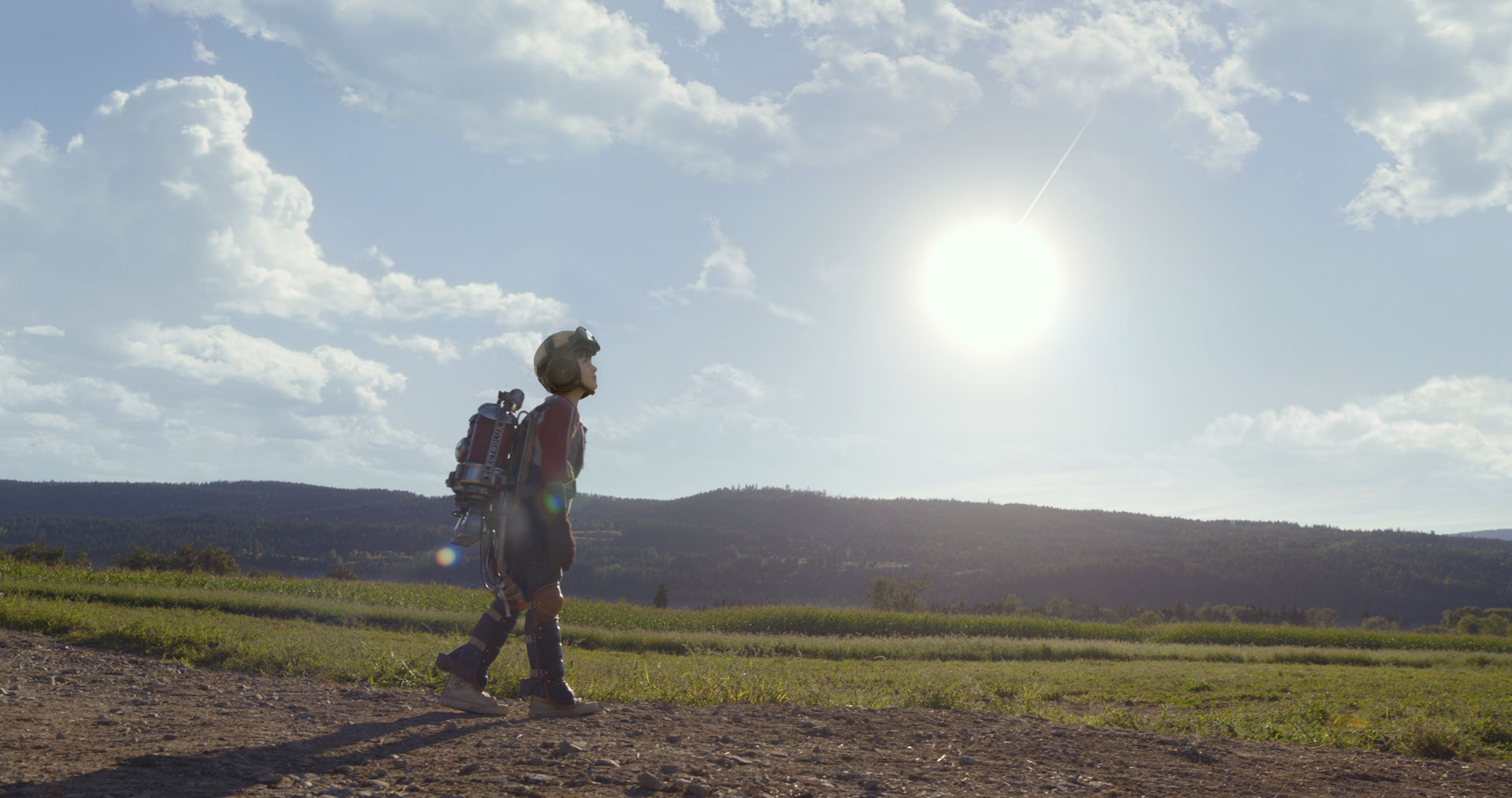
Themes That Tell Stories
For Giacchino, composing a movie score is all about understanding the story, characters, and emotions. “Music can ruin the movie if it doesn’t understand what the story is. Audiences will pick up on it. Even if they can’t explain it, they feel it, and they disconnect from the story.” He often waits to see the rough cut as his first impression as opposed to reading a script and forming his own ideas beforehand. A composer’s ideal role is to work in tandem with the director, something Giacchino learned in part working on multiple projects with Bird.
Score plays a critical role in Tomorrowland from its opening frames, when the soulful tones of Athena’s emotional theme combine with the rousing anthem of Tomorrowland and its founding organization, Plus Ultra. Giacchino and Bird wanted to introduce the story with a sense of hope.
“Let’s get the audience in the right mood from frame one,” Giacchino explains. “Let’s put it right up front so there’s no question as to what it is and what mood we want them in. We did that in The Incredibles, which at the time was not thought to be a good thing to do. Others said, what about the logo music and all these other things? Brad felt strongly about the idea of starting in a way that was more mysterious. Ratatouille [2007] was the same and Tomorrowland was no different. The audience can settle into the ride that we’re bringing them on.”
Athena’s theme mixes sadness with hope, reflecting both the struggles of Tomorrowland to meet the world’s needs and the melancholic state of Frank, who fell for Athena as a child, not realizing she was in fact a robot. “It has a bit of heartbreak because life is hard and it doesn’t always go the way you want it to go,” Giacchino comments. “Athena understood that, but she also still held hope for something. She was always ready to be engaged in a fight to make things the way they needed to be. There was never a question as to what was right or wrong with her. It was always forthright, going straight ahead. I wanted that theme to have a mix of those two ideas, an understanding of life and a resolute feeling. That was such an important part of the movie.”
The fanfare that makes up Plus Ultra’s theme serves multiple needs in the story. There are grand and somber versions, as well as a resounding variation when young Frank takes off in his jetpack for the first time. It all adds up to a sense that “this is a place for everyone,” as Giacchino puts it. He stresses flexibility in his compositions and works methodically to identify the correct feelings for each piece. “It’s an emotional and analytical exercise, a sort of marriage between art and science, which was great because that’s what this whole movie was about, in a way.”
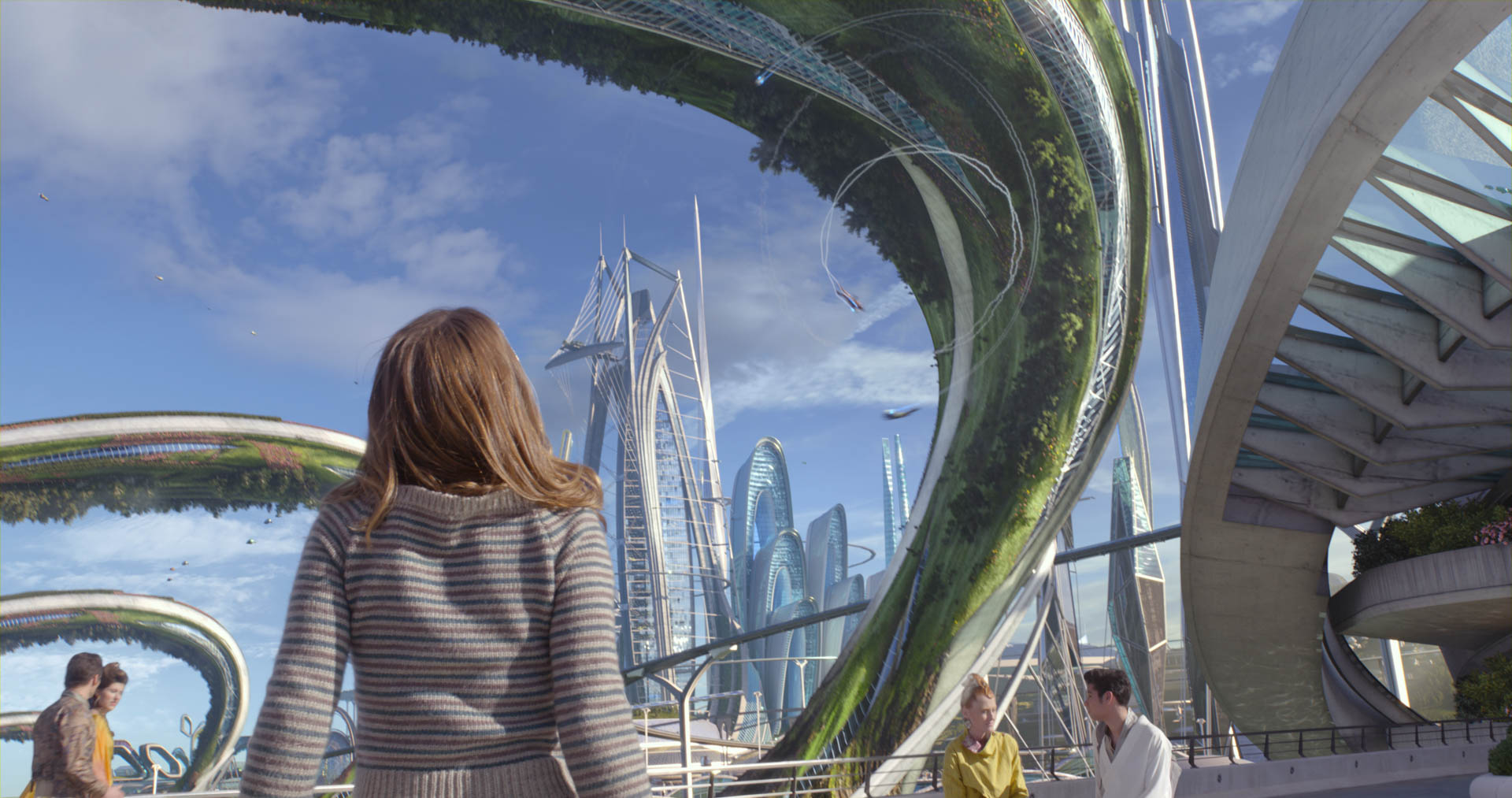
Visions and Flickers
When Frank, Casey, and Athena finally arrive in Tomorrowland, Nix takes them to “the monitor,” an enigmatic device that harnesses newly-discovered particles to glimpse a possible vision of the future. The vision, however, is susceptible to the emotional state of its beholders, which in turn can be influenced by the monitor’s own tantalizing images. It seems that humanity’s despondent tendencies have been manipulated by this machine at the expense of hope and optimism. As Casey takes control of the monitor, she experiences a montage of the coming apocalypse, and Giacchino’s score takes a decided turn.
“That’s the reality check,” the composer explains. “You can have as many hopes and dreams as you’d like and an attitude that it’s going to work out, but it doesn’t always. The music in that scene represents the danger of what is also possible if you’re not careful. It’s a gut check. Then you decide, well I understand it, so it’s important to be clear about all sides of things. If you are just an optimist, you are going to trip and fall at some point because you’re not watching for the things that are coming your way. You need just a bit of cynicism in you to double check your optimistic side.
“If you keep the cynicism in a particular place and acknowledge it, that can be a very valuable tool, as long as you don’t allow it to control you,” Giacchino continues. “It can paralyze you. You have to keep it slightly at bay, but acknowledge it. When we ignore problems, they get worse. Humans are the absolute best at creating problems and not solving them. Instead of solving them, they’ll choose to put it somewhere and not think about it. We have to keep an eye out for this stuff so it doesn’t overtake us.”
With her eyes ever open, Casey refuses to accept the inevitability of the monitor’s predictions. With the possibility of a better future, the images flicker, showing brighter horizons. The score follows suit with a shimmer from the string sections that almost feels akin to the piece of score in Walt Disney’s Pinocchio (1940) when the wooden boy’s nose grows in length as he tells a lie. Giacchino agrees with the comparison, noting that the flicker is “an act of conscience,” or like Jiminy Cricket giving advice to Pinocchio.
“It’s something that’s reminding you and pointing you in a better direction,” the composer says. “We all need that in our lives. It shows up as friends, family, or something you read that makes you think differently about a particular thing. Using that musically, it’s just a personification of what that is. It’s not something that you can physically see. It’s a signpost for us.”
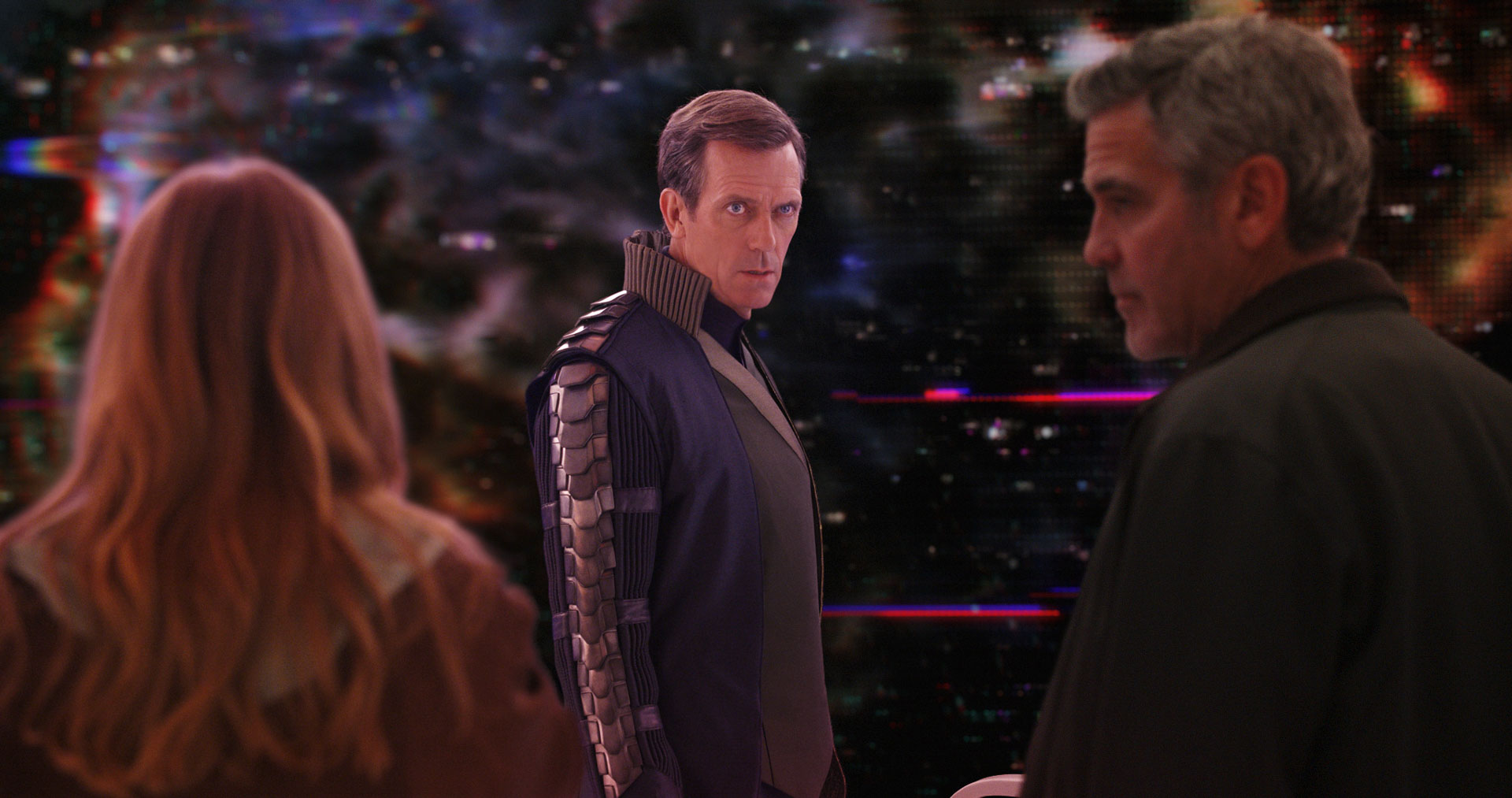
A Poignant Finale
When Nix tries to do away with the heroes who are a threat to his own fatalistic resignation, it’s Athena who makes the ultimate sacrifice to save her friends. Her final goodbye to Frank is accentuated by Giacchino’s beautifully restrained score, with soft notes from a celeste.
“When dealing with emotional scenes like that, which need to resonate, I always feel that being quieter and smaller is more powerful than being loud and in your face,” Giacchino says. “If you have a friend that just went through a tough experience and they came to you to talk about it, would you yell at them? You wouldn’t tell them loudly, ‘No, it’s gonna be fine! It’s great!’ or ‘My God! I can’t believe it! That’s terrible.’ You would be quiet and just listen. That’s the best thing you can do. If we can do that with the score, that’s going to be the most powerful thing for an audience member.”
Tomorrowland’s final montage strings together a series of dreamers from all walks of life, each discovering their own Tomorrowland pin, the invitation to visit this world and embrace a hopeful, constructive outlook for the future. Giacchino’s score reprises a familiar bridge sequence used throughout the film. “It’s a motif that bolsters the idea of moving ahead. Everything needed to point in that direction, and that bridge was a simple version of that.”
But whereas earlier in the film, this rising movement fizzles under the complications and struggles of trying to realize such a vision, the final scene brings it to a powerful crescendo, full of rich possibility.
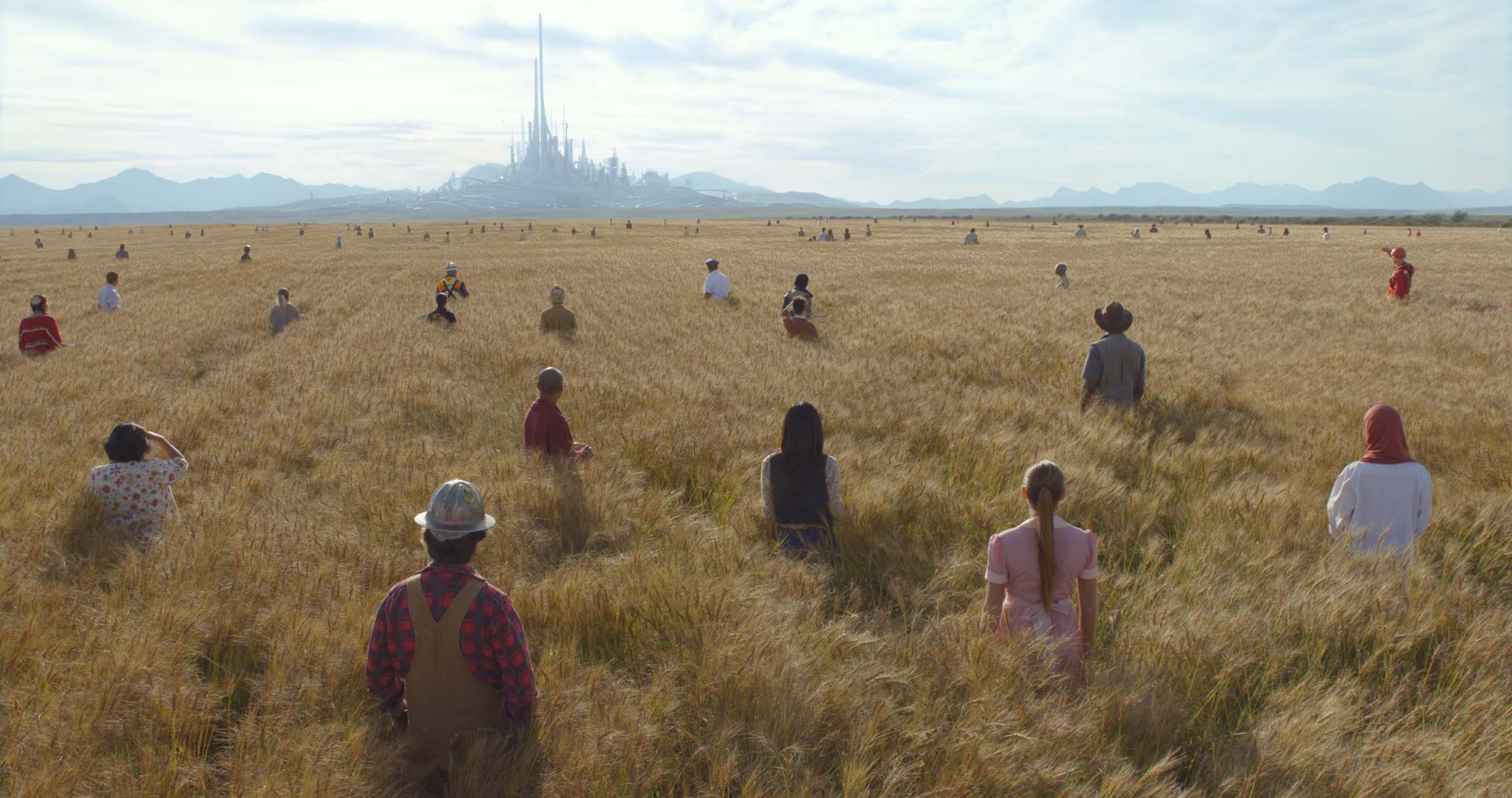
A Story that Lives On
“Tomorrowland as a film and a concept for me is about bringing out the best in the world,” Giacchino asserts. “What can the world be? What do we want it to be? We may still be far off from having what we want it to be today, but I like having it there as a reminder. Individuals need to be reminded so that the whole group can work together to create a better place. Small reminders are important.”
The composer observes that in the 10 years since the film’s release, he’s discovered a passionate following among the audience that’s only grown in size. “It wasn’t the biggest success when it first came out, which was disappointing at the time, but over the years we’ve realized that it has touched a large group of people in a way that we didn’t know. As you go out and engage with fans, you realize what it’s meant, and that new people are discovering it. We all felt a really positive energy making it, and we’re feeling that energy towards the film now.”


